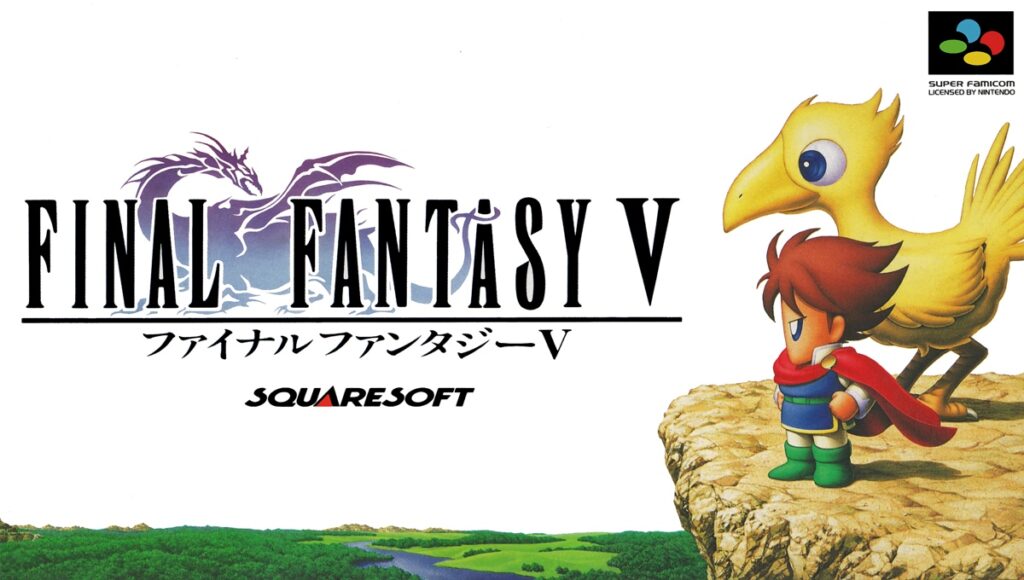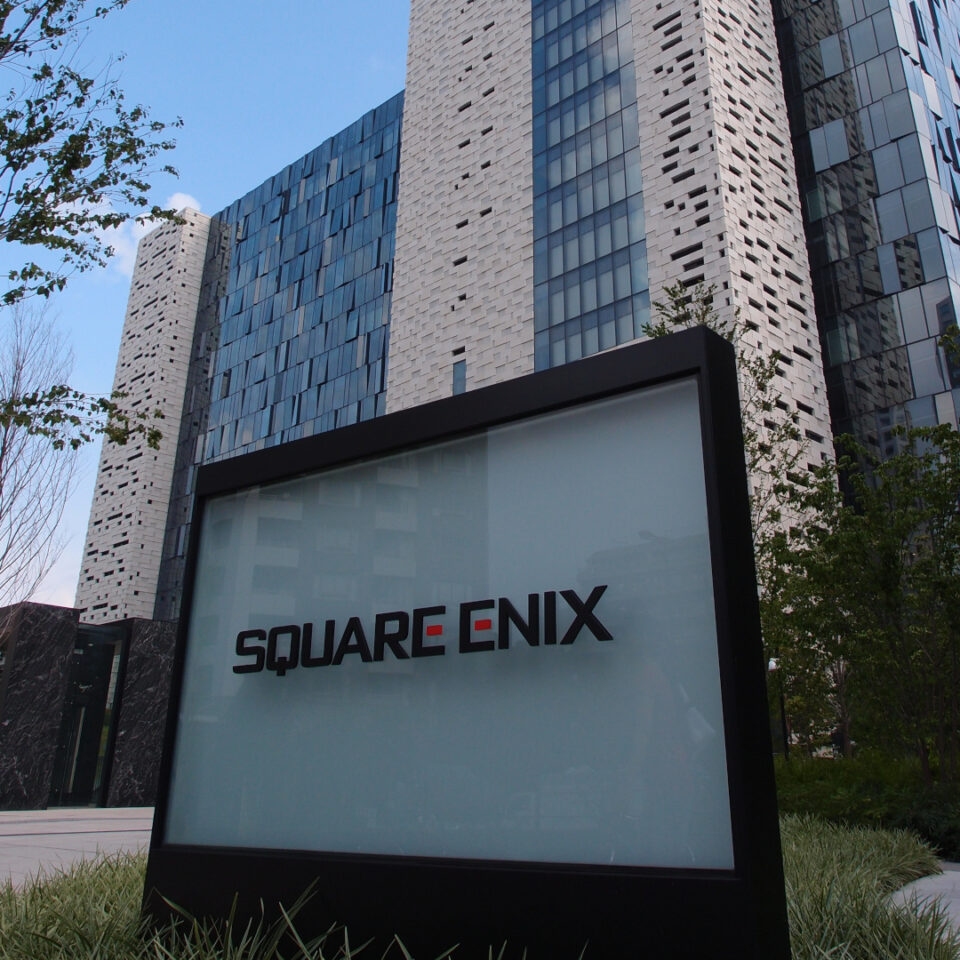Power lines. That is where Square, a studio now celebrated for its role-playing games, began.
In 1983, Square was a subsidiary of Den-Yu-Sha, an electric power conglomerate. Den-Yu-Sha was run by Kuniichi Miyamoto, who secured regular contracts with Shikoku Bank. As origins go, this is unusual. It lacks the dramatic flair with which other gaming giants have swelled from humble and lean beginnings to limit-breaking hulks. Take CD Projekt, for example, which started in communist Poland, in 1994, with a high school kid hawking cracked copies of Western games in a Warsaw market. Picture the scene: a young man with a tray of CDs, each bearing a freshly coded escape, and a stream of furtive buyers. Flash forward to Cyberpunk 2077, in which capitalism has cracked under its own weight, and droves of citizens pay for discs that plug them into digitally authored hallucinations.
We haven’t so much come full circle as the circle has span and whirred and coughed up a perfect parody: the high school kid is now the head of a software empire. When it comes to Square, however, the empire was well underway. Miyamoto’s son, Masafumi, harboured ambitions that strayed from electrical infrastructure. After graduating from Waseda University, he considered manufacturing women’s clothing, before starting a software development division in Den-Yu-Sha instead. What a swerve! Only someone buoyed and boosted by wealth can afford to treat the trajectory of his own life as something to be played with; even so, to go from the seasonal folds of fashion to game development suggests a restless soul. If there is a common thread that tethers these trades, it could be an instinctive eye, beyond mere technical ability, for what works: “I don’t understand how computers work but I do understand what a good computer game should be.”
That, according to a piece published in an economics journal of Okayama University, was the guiding conviction with which Miyamoto went into game development. It has all the essential ingredients for success: a blend of the bluff and the confident, with an essential blindness to the pitfalls and struggles that pock the way. One of Miyamoto’s strategies was to surround himself with smart people. In the same journal, Hisashi Suzuki, an ex-C.E.O. of Square, describes Miyamoto’s approach. “Mr. Miyamoto was quite enthusiastic about this business but didn’t know much about video games. He said let’s do this or do that but always missed the point. Imagine that such a person is your boss.”
The arrival of Hironobu Sakaguchi, a gifted engineering student of Yokohama National University, was important for two reasons. One, as Suzuki explains, “Sakaguchi was the only person who could say ‘No’ to Miyamoto because he had already demonstrated his leadership in technical terms.” And two, Sakaguchi would go on to direct Final Fantasy, Final Fantasy II, Final Fantasy III, Final Fantasy IV, and Final Fantasy V. How’s that for a power line? And yet, early on, as Suzuki reports, Square was freaked out by the success of another RPG. “We were so shocked by Dragon Quest,” he said, noting that game’s publisher, Enix, for its ability to assemble talent. “Toriyama, the most popular comic author designed the characters. The promotions were unfolded on the best selling weekly magazine. The music, nobody could forget that melody, was composed by a professional pop musician.”

Indeed, in an interview with a trade magazine, Yuji Horii, who wrote the scenario for Dragon Quest, said of Enix, “They do not have programming capabilities within their organization. They even outsource game concepts and scenarios.” Miyamoto senior would be proud. This month marks the twenty-year anniversary of the merger between Square and Enix, and, if you were trying to define why that merger made sense, you could alight on the notion that one company was well schooled in the art of outsourcing, while the other specialised in party-building, as it were – in hiring talent and turning them onto the right projects. If it’s difficult, now, to prise the two companies apart (try slotting an “and” between their names, and note the wrongness that erupts from the fissure), it has much to do with the way these methods meld and complement each other.
Part of the reason that this may seem odd – that a natural fit could be found between two competing companies, as opposed to a rabid rivalry – is that we no longer appear to live in the age of the harmonic merger. We live in the epoch of steel-tipped acquisition. Think of Microsoft buying Bethesda, and it’s tough to see it as an embrace of like-minded businesses, rather than a tactical manoeuvre, on the part of the bulkier company, to lacquer itself against competition. The biggest merger of the modern era is that of Activision Blizzard, but that seems more like one of those strategic, sexless medieval weddings, in which a king and queen were merged in holy matrimony for the sake of salving a few ructious regions. For one thing, the pair are barely joined. When talking about Call of Duty, you would no longer say that it was published by Blizzard as you would that World of Warcraft was published by Activision. The clue is there in the logo: that vertical line wedged discreetly between the words, cooling the wild clash of fonts.

Not that the union between Square and Enix was entirely without friction. Talks first began in 2000 but were delayed; the release of Final Fantasy: The Spirits Within – a C.G.I. movie, written, directed, and generally dragged into being by Sakaguchi, with no one who could say “No” – had drained Square’s finances. Enix, which had a reputation not just for outsourcing, and for diffusing its focus among multiple projects, but for frugality, pulled back from the merger until Square had balanced its accounts. When, in 2003, Square had stabilised, thanks in part to the successes of Final Fantasy X and Kingdom Hearts, Enix agreed to go ahead. Takashi Oya, of Deutsche Securities, casted doubt on the merger, citing the companies’ opposing strategies as a possible rub. “Enix outsources game development and has few in-house creators, while Square does everything by itself. The combination of the two provides no negative factors but would bring little in the way of operational synergies.”
Twenty years on, the operational synergies more or less speak for themselves. It’s easy, and maybe a little pat, to look at the company’s output and note the needle as it flicks between creeds: as the publisher put out a wealth of untypical titles, such as Tomb Raider, Hitman, and Deus Ex, for example, to credit the profusion to the Enix touch. Likewise, you could look at the company’s recent decision to sell off these franchises and call it a classic example of Square-style consolidation. The truth, though, is likely somewhere in between. How else to view the spree of acquisitions, in the wake of the Square Enix merger (Taito, Eidos, Crystal Dynamics, all swallowed up) if not a commingling of company approaches – a fusion of Enix’s knack for contracting outside talent and Square’s desire to keep the focus, and the spirit, within.
As we are assailed, on a weekly basis, with news stories steeped in the mud of Microsoft’s attempt to purchase Activision Blizzard, and its ongoing fracas with Sony, it’s worth remembering that there are times when companies fastening together can be a happy thing. Beyond simply raising a bulwark against market competition, and injecting the coffers with fresh cash, the Square Enix merger saw two publishers channelling their idiosyncratic methods, finding a middle ground, and forging ahead. There was one person who opposed the move, back in 2003: Masafumi Miyamoto, the man who started it all. The reason? His ownership stake would be significantly diluted, as the company grew. In the end, though, he voted to approve. Perhaps, putting aside his own shortfall, he understood what a good computer game company should be.






